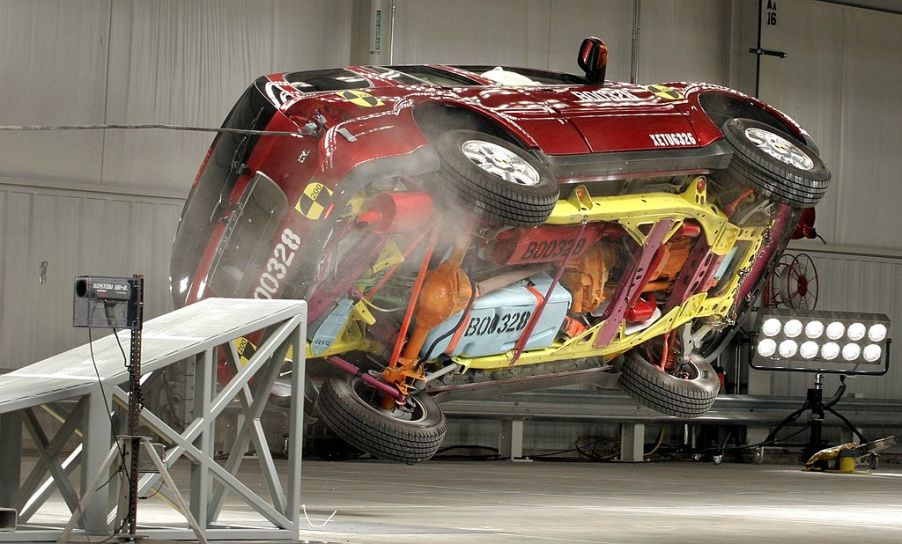
These 9 SUVs Scored Terribly In IIHS Crash Tests
Backseat passengers are literally taking the brunt of injuries in car accidents. The Insurance Institute for Highway Safety has set in motion many new standards for car safety. These have significantly improved the likelihood of front-seat passengers surviving front-end collisions. But it’s those backseat passengers who haven’t seen the same focus. So the IIHS modified its testing to reflect what happens to those rear seat passengers. This should begin helping car companies make the same improvements in the back as in the front.
Which SUVs scored well in the IIHS crash tests?

To that end, the IIHS has introduced crash dummies that simulate 12-year-old children and small women. They’re placed in the rear seats and loaded with sensors for monitoring the “moderate overlap test.” First used in 1995, it’s one reason we’re twice as likely not to be killed as before its use.
Video and sensors used in testing found nine compact SUVs the IIHS tested scored poorly in this reconfigured crash test. But let’s start with those models that did well. Both the Ford Escape and Volvo XC40 did the best of the bunch. Testing showed passengers would sustain a minimal risk of injuries from these front-end collisions.
These SUVs rated in the middle of IIHS crash tests

The “acceptable” group only saw one vehicle, the Toyota RAV4. It did well in minimizing chest and lower extremity injuries. But the dummy head movement during the crash dipped, then landed between the rear curtain airbag and rear window. The lap belt also slipped upward, which could cause abdominal injuries.
In the “marginal” group, the Audi Q3, Nissan Rogue, and Subaru Forester showed increased neck, head, and abdominal injuries. In the case of the Forester, there was also a better chance of chest injury for rear passengers.
The last nine SUVs tested fell into the “poor” rating. These include the Buick Encore, Chevrolet Equinox, Honda CR-V and HR-V, Hyundai Tucson, Jeep Compass and Renegade, Mazda CX-5, and Mitsubishi Eclipse Cross. For each of these vehicles tested, there was a strong likelihood of head, neck, chest, and abdominal injuries to rear-seat passengers in car accidents.
How soon will these tests improve rear seat safety in future SUVs?

Most of these injuries were the result of seat belt forces. Some dummies saw heads that hit the front seatback or C-pillar, heads that slipped between the rear curtain airbag and window, as well as lap belt slippage. “The industry has always been good about responding to tests that we have introduced,” said IIHS President David Harkey told Autoblog. “We expect they will do so in this case, and we expect they will be able to do so quickly.”
The compact SUV category is the only SUV segment the IIHS has tested so far. When they release the next round of testing, we’ll see how the groups compare. And as the IIHS continues these tests, we can expect the automakers to improve the safety of rear passengers as it has done for passengers in the front seats.



